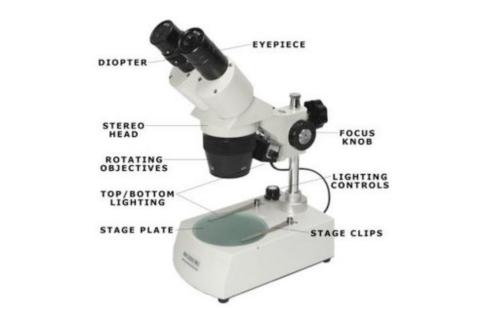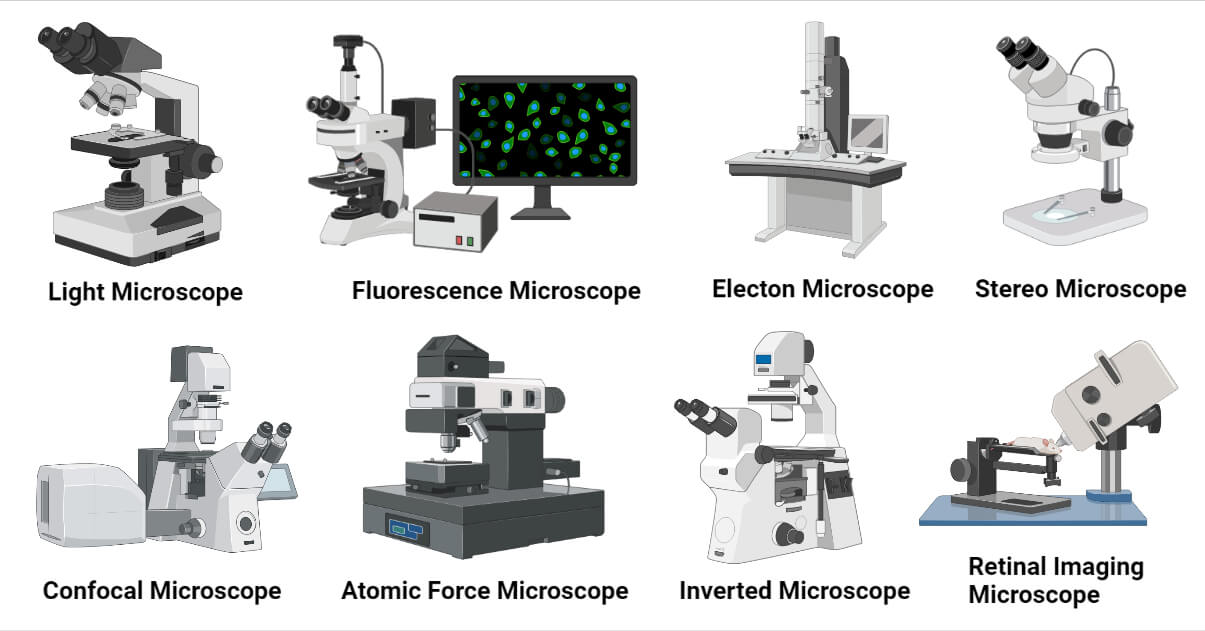Top Microscopes For Cell And Molecular Biology
Discover the top microscopes used in cell and molecular biology. Explore their features and how they revolutionize scientific research.
Do you ever wonder how scientists study tiny cells and molecules? They use a special tool called a microscope! It’s like a super magnifying glass that helps them see things that are too small for our eyes. In this article, you’ll learn all about the top microscopes that scientists use for cell and molecular biology.
The first microscope we’ll talk about is called a light microscope. It uses light to help magnify the tiny objects. This microscope is great for looking at cells and seeing their different parts. You can even see things like the nucleus and the mitochondria! But sometimes, the light microscope can’t magnify enough to see the really tiny molecules. That’s where the electron microscope comes in.
The electron microscope is like the light microscope’s big brother. It uses beams of electrons instead of light to magnify the objects. This microscope is really powerful and can show scientists the tiniest details of cells and molecules. With an electron microscope, scientists can even see things like individual atoms! It’s like having super vision.
There are many more types of microscopes that scientists use, each with their own special features. In this article, you’ll learn about the different types of microscopes and how they’re used in cell and molecular biology. Get ready to dive into the tiny world of cells and molecules!

Understanding the Importance of Microscopes in Cell and Molecular Biology
Microscopes have revolutionized the field of biology and enabled scientists to explore the intricate world of cells and molecules. These powerful instruments have unraveled countless mysteries of life by providing a closer look at the building blocks of living organisms. In this article, we will delve into the significance of microscopes in cell and molecular biology research, and review some of the top microscopes available in the market today.
Exploring the Cellular World through Microscopes
Cells are the fundamental units of life, and understanding their structure and function is essential for unraveling the complexity of living organisms. Microscopes play a pivotal role in bridging the gap between what we can perceive with the naked eye and the hidden realm of cells. Through the use of microscopes, researchers can observe cellular structures, study cellular processes, and gain valuable insights into the functioning of organisms.
Optical microscopes, also known as light microscopes, are widely used in cell biology research. They utilize visible light to magnify and resolve the minute structures within cells. By illuminating the specimen with light and capturing the transmitted or reflected light, optical microscopes offer a wealth of information about cell morphology, organelles, and cellular interactions.
Electron microscopes, on the other hand, employ a beam of electrons instead of light to obtain higher resolution images of cellular structures. This allows scientists to observe ultrafine details within cells and visualize structures such as the nucleus, mitochondria, and Golgi apparatus with exceptional clarity. Electron microscopes have expanded our understanding of cell biology by providing a deeper look into the intricate world of cells.

Unveiling the Mysteries of Molecular Structures
While optical and electron microscopes excel in examining cellular structures, molecular biology research necessitates a more nuanced approach. Microscopes that are specifically designed for molecular studies enable scientists to probe the molecular interactions and dynamics that govern biological processes.
Fluorescence microscopy has emerged as a powerful tool in molecular biology research. By tagging molecules of interest with fluorescent probes, researchers can visualize these molecules in live cells and track their movements, interactions, and localization. Fluorescence microscopy has revolutionized our understanding of protein localization, as well as the dynamics of cellular processes such as DNA replication, protein synthesis, and signal transduction.
Confocal microscopy takes fluorescence microscopy a step further by eliminating out-of-focus light and enhancing image clarity. This technique utilizes a pinhole aperture to selectively capture light emitted from a specific focal plane, resulting in sharper and more detailed images. Confocal microscopy is invaluable for studying three-dimensional structures within cells and provides researchers with a clearer understanding of complex molecular interactions.
Super-resolution microscopy has pushed the boundaries of traditional light microscopy by surpassing the diffraction limit. This breakthrough technique allows scientists to visualize molecular structures at an unprecedented level of detail. Super-resolution microscopy has enabled the exploration of subcellular structures, membrane organization, and the dynamics of molecular complexes, thus opening new avenues of research in molecular biology.
Criteria for Choosing the Top Microscopes for Cell and Molecular Biology
When selecting a microscope for cell or molecular biology research, several factors need to be considered. Two critical factors are resolution and magnification, as they determine the level of detail that can be observed. Higher resolution and magnification capabilities enable researchers to discern finer structures and reveal intricate molecular processes.
Optical microscopes typically offer a range of magnification options, but their resolving power is limited by the physics of light. Electron microscopes, on the other hand, provide exceptional resolution but are often limited in terms of sample preparation and imaging conditions. Depending on the research requirements, scientists must choose between these two types of microscopes to best suit their needs.

Optical vs. Electron Microscopes: Choosing the Right Tool for the Task
Optical microscopes are versatile instruments that can be used for a wide range of biological applications. They are particularly useful for observing living cells in real-time, as they can be equipped with environmental chambers to maintain optimal conditions for cell viability. Optical microscopes also allow for easy sample preparation and are generally more user-friendly compared to electron microscopes.
Electron microscopes, on the other hand, offer unparalleled resolution and are essential for studying ultrastructural details. These microscopes are particularly suited for fixed and dehydrated samples, and are commonly used in fields such as cell ultrastructure analysis, nanotechnology, and material science. Electron microscopes, however, often require extensive training and expertise to operate, and their use is restricted to specialized laboratories.
Advanced Imaging Techniques: Fluorescence, Confocal, and Super-Resolution Microscopy
In addition to the choice between optical and electron microscopes, researchers must also consider the advanced imaging techniques available. Fluorescence microscopy is a widely adopted technique that allows scientists to visualize specific molecules or structures within cells by using fluorescent labels. The ability to track and monitor dynamic cellular processes in real-time has made fluorescence microscopy an indispensable tool in cell and molecular biology research.
Confocal microscopy, with its ability to eliminate out-of-focus light and visualize structures at different depths within cells, provides researchers with a more precise understanding of cellular structures and processes. This technique has found applications in a wide range of fields, including neurobiology, immunology, and developmental biology.
Super-resolution microscopy has revolutionized the field of molecular biology by breaking through the diffraction limit of light. It enables scientists to visualize structures with unprecedent




